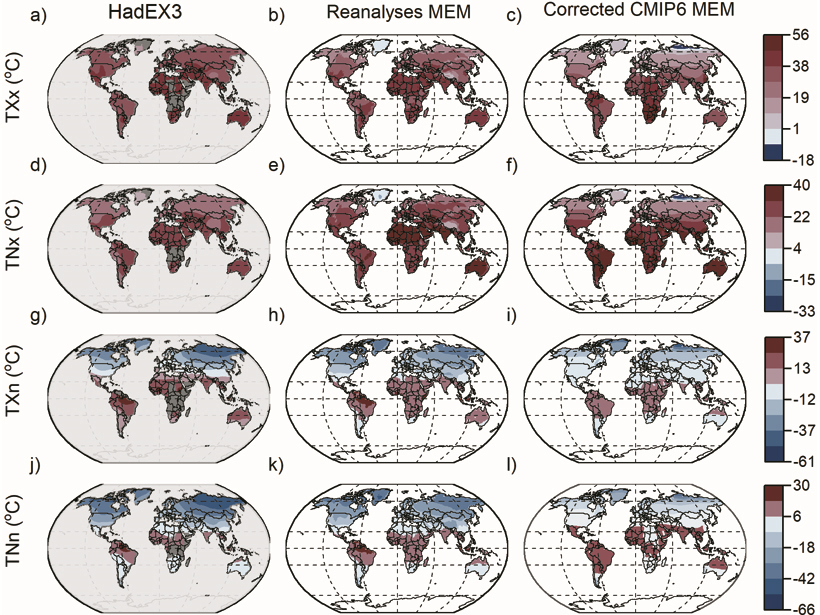Editors’ Highlights are summaries of recent papers by AGU’s journal editors.
Source: Earth and Space Science
In a warming world, it is crucial to study the evolution of temperature extremes, such as heatwaves and wildfires. These extremes carry severe implications for water availability, soil conditions, and food production with consequences on economic sectors and human stability.
Ajjur and Al-Ghamdi [2021] demonstrate that temperature extremes would increase “unprecedently” over all global land areas, with a notable change observed in the coldest days and nights. When comparing the end of the twenty-first century (2071-2100) with the historical period (1981–2010), they project a temperature increase up to 7.4oC in the warmest day, 6.6oC in the warmest night, 10.9oC in the coldest day, and 12oC in the coldest night parameters, under the business-as-usual scenario. The global hotspots affected mainly by this increase are North America, Iceland, Central Asia, the Russian Arctic, Siberia, the Mediterranean, and the Middle East and North Africa.
The trend in temperature extremes is “unequivocally” linked to anthropogenic influences, such as greenhouse gas emissions and land use activities. The authors argue that “dismissing the evolution in temperature extremes leads to reactive-way management relying on emergency responses, making temperature extremes exact their toll”.
Citation: Ajjur, S. B., & Al-Ghamdi, S. G. [2021]. Global hotspots for future absolute temperature extremes from CMIP6 models. Earth and Space Science, 8, e2021EA001817. https://doi.org/10.1029/2021EA001817
—Jonathan H. Jiang, Editor, Earth and Space Science
Text © 2021. The authors. CC BY-NC-ND 3.0
Except where otherwise noted, images are subject to copyright. Any reuse without express permission from the copyright owner is prohibited.

